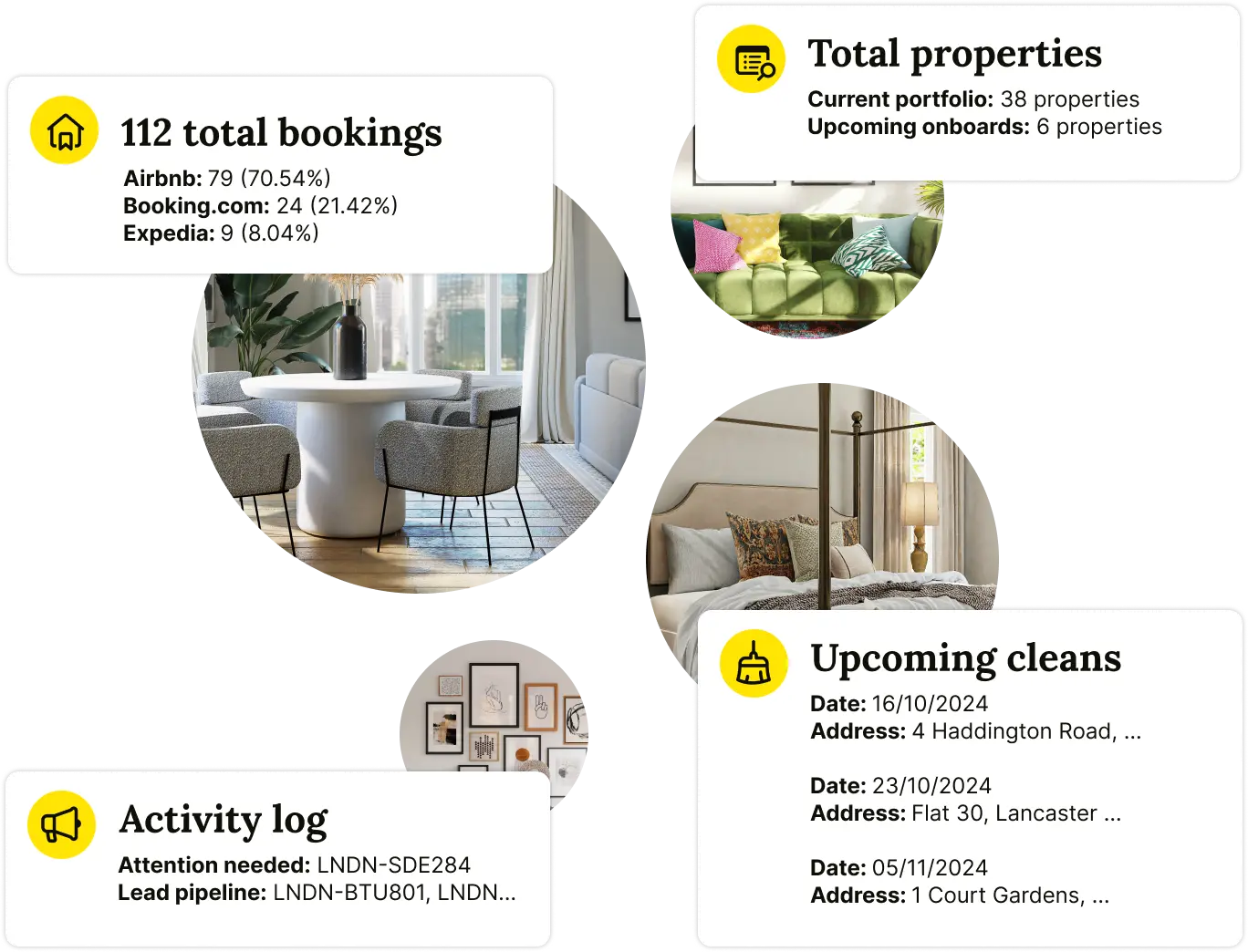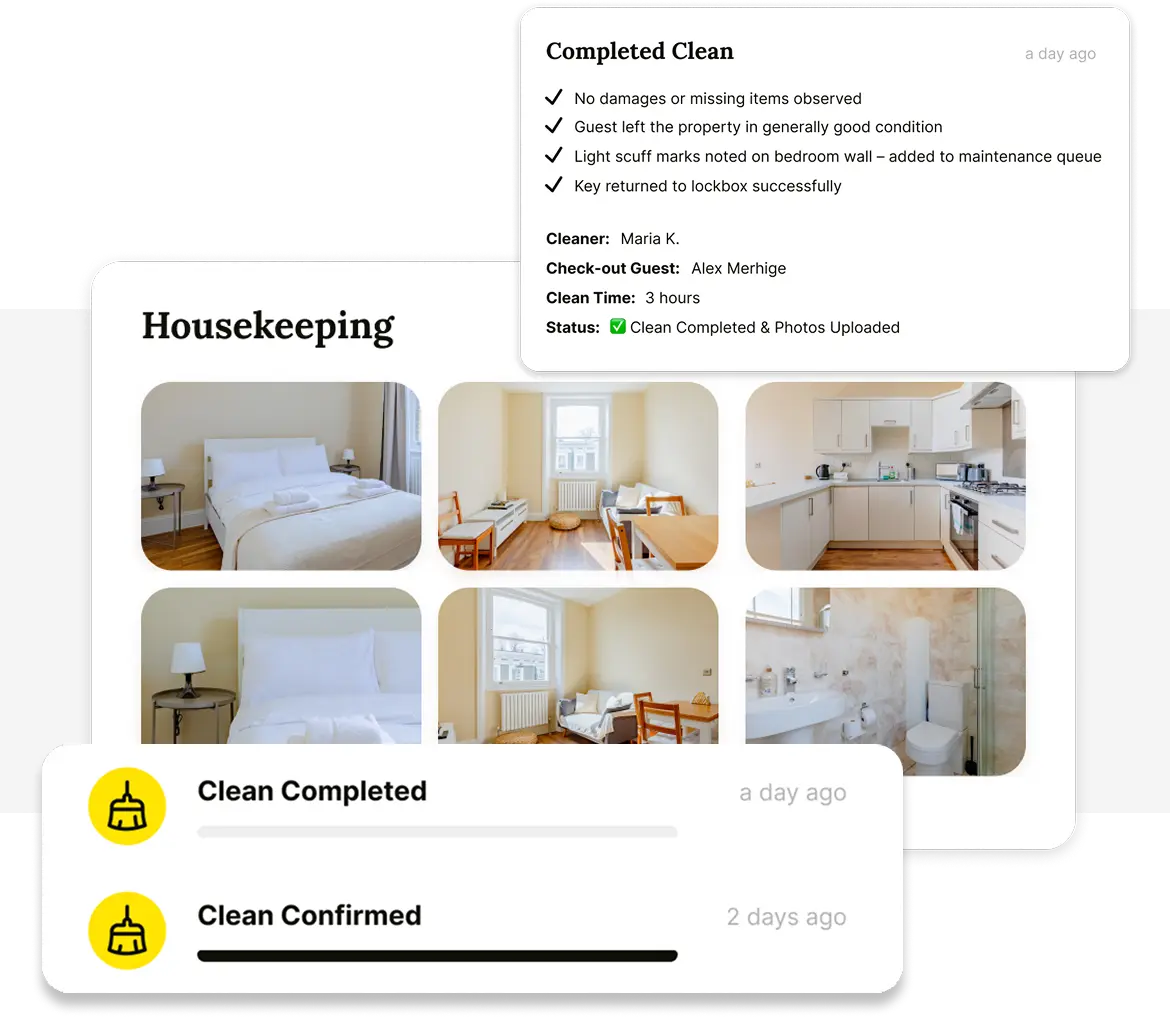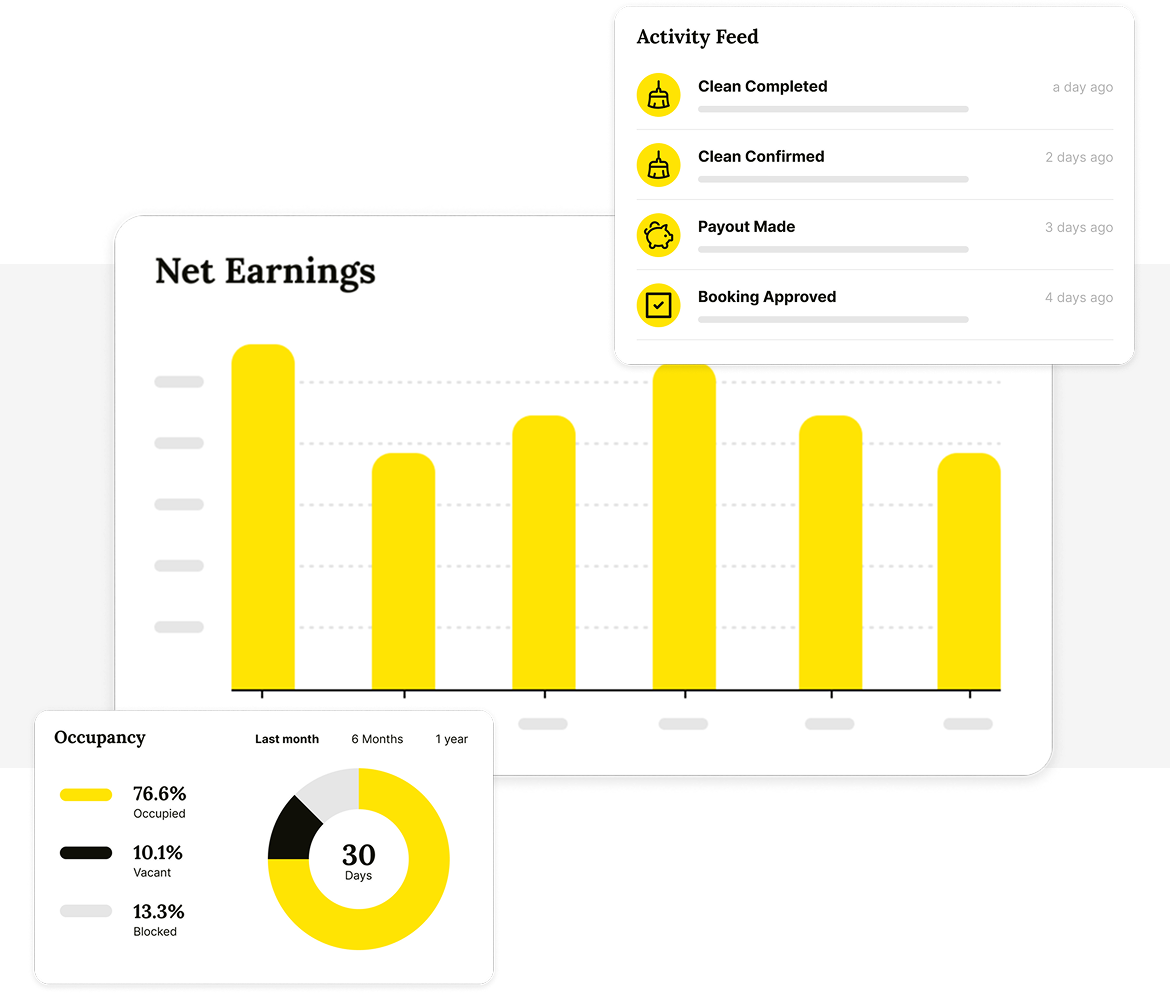Landlord compliance can often appear to be a daunting task, particularly for those new to the role. Being a landlord entails more than finding tenants, collecting rent, and handling repairs. The legal responsibilities that come with the territory can be quite extensive. In this article, we'll discuss 7 compliance requirements that all landlords should know. So, let’s get started!
Before exploring property compliance in the UK, it's essential to establish a clear understanding of what this term entails. Property compliance encompasses the laws and regulations governing properties' construction, usage, and upkeep.
Recognising the significance of property compliance in the UK is of utmost importance. Property owners must follow regulations to avoid fines, legal trouble, or jail time. It's important to act and ensure we comply with these rules.
Table of Contents
Building Regulations
UK building regulations ensure that all properties meet safety, energy efficiency, and accessibility standards. These regulations apply to both new constructions and renovations. They prioritise safety and comfort, leaving no detail unchecked for residential and commercial properties to meet the specified standards. From the foundation to the rooftop, each aspect is carefully examined and regulated to create spaces that prioritise the well-being of the occupants.
Building regulations focus on energy efficiency to reduce environmental impact and conserve resources. This includes everything from incorporating modern insulation techniques to employing energy-saving appliances and lighting solutions.
UK building regulations prioritise inclusivity, ensuring access for all, including those with disabilities. These regulations promote an inclusive environment where everyone can thrive by integrating features like ramps, handrails, and wider doorways.
.webp)
Building Regulations for New Buildings
In constructing a new building in the UK, obtaining approval from the local building authority is an essential initial step. Before any groundwork can commence, you must undergo a meticulous approval process.
To begin, you must submit detailed plans and specifications for the proposed building. The local building authority will thoroughly review these documents to ensure they align with the relevant building regulations. This scrutiny is vital to guarantee the building meets safety, energy efficiency, and accessibility standards.
In addition to general building regulations, local area permissions may be required. These permissions vary by location due to unique considerations or requirements.
Building Regulations for Renovations and Extensions
Architects and designers know building regulations, while experienced builders know compliance. While some home extensions may be carried out under Permitted Development (PD) rules without a formal planning application, homeowners must recognise their legal obligation to ensure compliance with Building Regulations.
Not following these rules can lead to serious penalties such as large fines, required destruction of the building, and legal arguments with contractors. While certain structures like porches and conservatories may be exempt from Building Regulations, any habitable extension added to a home must comply fully.
Plan and design projects carefully according to regulations. It's better than dealing with non-compliance later. By specifying compliance details during the design stage and making a Full Plans application to Building Control, you can proactively minimise the risk of costly mistakes.
Building Regulations for Energy Efficiency
The major objectives of UK building regulations are promoting energy efficiency and reducing greenhouse gas emissions. The country is committed to a more sustainable built environment, with stringent standards for energy efficiency in new builds and renovations.
In 2018, the UK government introduced The Minimum Energy Efficiency Standards (MEES) to address the energy efficiency of privately rented houses and buildings with poor performance. The primary objective of MEES is to enhance energy efficiency across the sector.
For rented domestic properties in the private sector, it became a crucial requirement to achieve a minimum Energy Performance Certificate (EPC) rating of E or higher since the implementation of these regulations in 2018. This applied to new leases and renewals from April 2018 and all existing tenancies from April 2020.
EPC ratings apply to Assured, Regulated, and Domestic Agricultural tenancies, properties for sale or rent, and those modified in the last 10 years. If your property falls under any of the mentioned domestic tenancy types and possesses an EPC rating of F or G, it becomes crucial to take appropriate action to meet the requirements outlined in the MEES regulations.
.webp)
Building Regulations for Disabled Access
The UK's National House Building Council (NHBC) guarantees that new homes are built with accessibility features suitable for disabled individuals. The main aim is to establish an environment where everyone feels included and can access everything they need.
Part M of the Building Regulations, as implemented by NHBC, is a key aspect of their guidelines. Part M concentrates on providing accessible access to and usage of buildings. This involves meticulous considerations for disabled access, encompassing design elements such as entrances, doorways, corridors, ramps, stairs, and essential facilities like toilets and parking spaces.
NHBC's commitment to accessibility extends to promoting the implementation of Lifetime Homes Standards. These standards emphasise creating homes with adaptable and flexible features to accommodate changing needs over time. Such features include level access entrances, wider doorways, accessible bathrooms, and provisions for home lifts or stair lifts.
Wheelchair accessibility is also a significant consideration within NHBC's regulations. Guidelines focus on ensuring clear access routes throughout the home and sufficient space for manoeuvring a wheelchair in essential areas like bedrooms, bathrooms, and living spaces. This may necessitate wider doorways, appropriate turning circles, and level thresholds to facilitate easy mobility.
Penalties for Non-Compliance with Building Regulations
Property owners, developers, and builders must follow local building regulations to avoid legal or financial consequences. Not following building regulations could have negative effects, such as:
- Fines: If building regulations are not followed, local authorities can give fines. The fine amount depends on how serious the violation is and can get bigger if the problem is not fixed quickly.
- Legal Action: Non-compliance can lead to legal action against the responsible parties. Going through court proceedings can take time and money and harm your reputation.
- Demolition Orders: If a building doesn't follow safety rules and can't be fixed, the government might order it to be torn down to keep people safe.
- Injunctions: If a building doesn't follow the rules, local authorities can stop construction or occupancy by getting an injunction. The building can't be used until necessary changes are made to meet the regulations.
- Insurance Issues: Non-compliant buildings may face difficulties obtaining rental home insurance coverage, exposing the property owner to potential liabilities.
- Difficulty in Selling or Renting: Non-compliant properties may face challenges in the real estate market, as potential buyers or tenants may hesitate to invest in or occupy a building with unresolved regulatory issues.
Planning Permission
Besides building regulations, you need planning permission from the local council for certain types of construction or development on your property. Planning permission ensures that your proposed development aligns with the local area's plans and does not negatively impact the environment or community. Obtaining this permission before proceeding with your project is essential to avoid potential enforcement action, fines, or the need to reverse unauthorised development.
.webp)
Types of Planning Permission
Depending on your proposed development, you may need to obtain different types of planning permission. Some examples include:
Full Planning Permission
Full planning permission is required for building or renovating a structure. You must send detailed plans and specs to the local council for review to get them. They'll check that your project follows the local development plan and meets all the rules.
Full planning permission is needed to assess a project's environmental and social impact. The council will look at your development's design, size and look to ensure it works well in the area. Also, they consider any potential impact on neighbouring properties, traffic, and public services.
Outline Planning Permission
Outline planning permission provides approval for a development's general concept or principle without requiring detailed plans for specific elements. With this type of permission, the developer gains initial approval for the proposed project in broad terms. At the same time, more detailed information and specific design aspects will be submitted and reviewed later.
During the outline planning application, the local planning authority evaluates whether the proposed development aligns with the local planning policies and if the concept suits the area. It typically includes considerations for the development's scale, layout, and use.
Once outline planning permission is granted, the developer can proceed with the project in principle. However, before construction begins, they must submit reserved matters applications, which provide detailed information on specific aspects of the development, such as design, appearance, landscaping, and access. Once these "reserved matters" are approved, full planning permission is granted, allowing the development to proceed with the detailed plans.
Permitted Development
Certain types of development can proceed without full planning permission if they meet specific criteria outlined in the law. This is known as permitted development. This streamlined process is designed to provide property owners with more flexibility and ease for minor alterations and improvements to their properties.
Examples of permitted development include:
- Small Extensions
- Loft Conversions
- Garage Conversions
- Installation of Solar Panels
- Minor Alterations
Permitted development rights can vary based on the property's location, type, and any existing planning conditions or restrictions.
%2520(1).webp)
Listed Building Consent
To preserve a listed building's historical, architectural, or cultural significance, always seek listed building consent before renovating, altering, or modifying the property. This permission safeguards the building's character, historical value, and integrity.
Listed buildings are considered of special architectural or historic interest and are protected by law to preserve their unique features and heritage. Listed buildings require carefully considered changes to preserve their original design and cultural value.
Applying for listed building consent typically involves submitting detailed plans and specifications to the local planning authority, demonstrating how the proposed changes will be sympathetic to the building's historic fabric. The authority and experts will review proposed changes to ensure preservation principles are met.
You might need permission to make changes to a building that has been listed. This can include a variety of different types of work.
- Alterations to the building's exterior include adding or removing architectural features, windows, or doors.
- Interior changes that could affect the historic fabric, such as modifications to original ceilings, floors, or walls.
- Structural repairs or additions that impact the building's integrity.
- Changes to roofing materials or construction methods.
- Any work that alters the building's appearance or character in any significant way.
Failing to obtain listed building consent before alterations can lead to legal consequences, including enforcement action and potential restoration orders to reverse any unauthorised changes.
Advertisement Consent
You may need to get advertisement consent from the local council if you want to display ads on your property. This consent is necessary to ensure that the proposed advertisements align with planning regulations and do not negatively impact the surrounding area.
Advertisement consent is essential for various types of outdoor advertising, including but not limited to:
- Fascia Signs: Signs affixed to the front of a building or shopfront to identify a business.
- Hoardings: Temporary signs or boards enclose construction sites or building projects.
- A-Boards: Portable, freestanding signs often used for advertising businesses or events.
- Banners: Large banners or flags displayed on the exterior of buildings or fences.
- Illuminated Signs: Signs that use lighting for visibility during nighttime.
- Posters and Billboards: Large advertising displays placed on standalone structures.
The local council reviews applications for advertisement consent to ensure that the proposed advertisements are appropriate for the area and do not harm the local character, historic sites, visual amenities, or public safety.
Environmental Regulations
Property owners in the UK need to comply with environmental regulations, building codes, and planning permission. This helps minimise their environmental impact and support sustainability efforts, including preserving natural habitats. Some of the key environmental regulations relevant to property compliance are:
Regulations for Pollution Control
If you own property, you must safeguard the environment from any negative effects of your actions. To do this, it's important to refrain from releasing harmful substances into the air, water, or soil.
Regulations for Waste Management
Responsible waste management is essential for properties in the UK. Property owners must dispose of waste in compliance with the guidelines provided by organisations like the Waste and Resources Action Programme (WRAP). This includes properly segregating recyclable materials, safely disposing of hazardous waste, and using licensed waste carriers for transportation.
.webp)
Regulations for Conservation and Protection of Natural Habitats
The UK has diverse natural habitats, including protected areas like national parks and Sites of Special Scientific Interest (SSSIs). Property owners must be conscious of these habitats and may require special permissions before initiating construction or development projects.
Regulations for the Protection of Historic Buildings
The UK has a rich cultural heritage, and many buildings hold historical significance. Property owners must respect and protect these heritage assets when undertaking renovations or modifications. Special permissions, such as listed building consent, may be necessary to preserve the building's historical character and architectural integrity.
Health and Safety Regulations
Keeping the general public safe and healthy is the main goal of property compliance regulations in the UK. These regulations cover various properties, such as workplaces, short-term lets, and public buildings. They are designed to be comprehensive and ensure everyone stays safe and healthy. Some key aspects of health and safety regulations in property compliance include:
Health and Safety Regulations in the Workplace
Employers are responsible for keeping their employees safe at work. This means they need to:
- Check for potential risks and hazards through risk assessments.
- Give proper training to employees for a safe work environment.
- Ensure the workplace is safe and healthy by providing the necessary equipment and tools.
Health and Safety Regulations for Landlords and Property Owners
Landlords and property owners are responsible for keeping their tenants and visitors safe. They do this by:
- Maintaining safe properties and fixing any issues promptly.
- Regularly checking safety features like electrical systems and fire alarms.
- Providing necessary safety equipment, such as fire extinguishers and smoke detectors.
Health and Safety Regulations for Public Buildings
Schools, hospitals, and government buildings open to the public are subject to stricter health and safety standards. The regulations for these places are designed to safeguard people's health and ensure that the building and its amenities are secure.
These stricter health and safety regulations encompass various aspects to create a secure environment for all visitors:
Building Design and Layout
Public buildings should prioritise safety by ensuring easy access to emergency exits, clear escape routes, and sufficient spacing for the safe movement of people.
Fire Safety Measures
Buildings open to the public must have strong measures to prevent fires. Make sure to have fire alarms, sprinkler systems, emergency lighting, and well-maintained fire exits in place. Regular fire drills and training sessions are also conducted to familiarise occupants with evacuation procedures.
Accessibility and Inclusivity
To make public buildings accessible to people with disabilities, certain regulations need to be followed. These regulations require barrier-free access, which means buildings should have facilities like ramps and elevators. Additionally, buildings should have suitable signage for visually impaired individuals.
Health and Hygiene Standards
Public hospitals and healthcare facilities must follow strict cleanliness and health standards to ensure a safe and healthy environment for patients and visitors, free from infections.
Compliance with Building Codes
Public buildings must adhere to building codes and standards that promote structural integrity, electrical safety, and overall building resilience.
Fire Safety Regulations
Fire safety regulations are an essential part of property compliance in the UK. These regulations are put in place to protect against the risk of fire and prioritise the safety of the people inside the building.
Fire Safety Regulations for Commercial Buildings
UK commercial buildings must follow specific fire safety standards to keep people safe and prevent fires. Some key requirements include:
Fire Alarms
Commercial buildings must have fire alarm systems installed to detect and alert occupants in case of a fire. The early warning provided by these alarms is crucial for timely evacuation.
Fire Extinguishers
Having enough fire extinguishers in the right places is important to stop small fires from spreading. You may need different types of extinguishers depending on the type of fire risk.
Emergency Exits
Properly marked and unobstructed emergency exits are essential to ensure a quick and safe evacuation during a fire emergency.
Regular Fire Risk Assessments
To ensure safety, employers and responsible individuals should do fire risk assessments regularly. This will help them identify potential hazards and assess the level of risk. This helps in implementing appropriate fire safety measures.
.webp)
Fire Safety Regulations for Residential Buildings
In the UK, landlords must ensure that their residential buildings meet fire safety standards.
Functional smoke alarms in residential properties are critical to early fire detection, giving residents valuable time to respond and evacuate safely. Also, fire-resistant doors act as effective barriers, preventing the rapid spread of fire and smoke within the building.
To ensure ongoing compliance with fire safety regulations, diligent landlords carry out regular safety checks. These inspections help identify any potential hazards or issues and enable prompt action to address them.
Fire Safety Regulations for Public Buildings
UK public buildings, including schools and hospitals, are held to even higher fire safety standards. These regulations are specifically designed to prioritise the public's safety and protect against the risk of fire incidents.
Stricter fire safety regulations for public buildings typically include:
Fire Safety Measures
To ensure safety, public buildings must have advanced fire safety measures. These measures include systems for detecting and alarming fire, sprinklers, and lighting in case of an emergency.
Fire Evacuation Plans
Public buildings must have well-planned and marked fire evacuation routes to ensure smooth and efficient evacuation of occupants during emergencies.
Fire Drills and Training
Regular fire drills and safety training sessions are conducted to familiarise occupants with evacuation procedures and raise awareness about fire safety practices.
Fire Safety Inspections
Public buildings undergo frequent fire safety inspections to assess compliance with regulations and identify areas for improvement.
Fire Safety Officers
Larger public buildings often have designated fire safety officers responsible for ensuring ongoing compliance with fire safety regulations.
Penalties for Non-Compliance with Fire Safety Regulations
UK property owners must follow fire safety regulations to avoid serious penalties. Their legal obligation is to prioritise fire safety and ensure the well-being of occupants and visitors. Neglecting these responsibilities can have severe consequences.
- Fines: Property owners in breach of fire safety regulations may face significant financial penalties imposed by the authorities.
- Legal Action: If fire safety regulations are not followed, the property owner may face legal consequences such as civil or criminal proceedings.
- Imprisonment: In extreme cases where serious negligence or intentional disregard for fire safety is evident, property owners may face jail time due to their actions.
Property owners must understand and fulfil their fire safety responsibilities to avoid such dire consequences. It's important to take certain steps to ensure safety from fire hazards. These steps include: setting up fire safety measures, regularly assessing fire risks, keeping fire safety equipment in good condition, training employees adequately, and following fire safety standards.
Landlord and Tenant Regulations
Property compliance in the UK extends to regulations governing the relationship between landlords and tenants. Both parties are responsible for ensuring a harmonious and legally compliant tenancy arrangement.
The Landlord's Responsibilities
If you're a landlord in the UK, your responsibilities include:
- Ensuring the property is safe and well-maintained.
- Carrying out necessary repairs and maintenance promptly.
- Providing valid tenancy agreements and protecting tenant deposits in a government-approved scheme.
- Complying with relevant health and safety regulations.
- Addressing tenant concerns and maintaining clear communication.
The Tenant's Responsibilities
Tenants in the UK also have important obligations towards their landlords and the rented property, which include:
- Paying rent on time and in full.
- Keeping the property clean and in good condition.
- Not causing any damage to the property or its contents.
- Reporting any maintenance issues promptly.
- Complying with the terms of the tenancy agreement.
%2520(2).webp)
Dispute Resolution between Landlords and Tenants
If landlords and tenants disagree, there are ways to solve the problem peacefully. Here are some methods:
- Mediation: A neutral third party assists the parties in reaching a mutual agreement.
- Arbitration: A trained arbitrator reviews the evidence and decides on the dispute.
- Court Proceedings: If mediation or arbitration fails, the case may be taken to court for resolution.
7 Compliance Requirements
- Ensuring Your Property Is Fit for Habitation
As a landlord, your foremost obligation is to ensure that your properties are fit for habitation. The Homes (Fitness for Human Habitation) Act 2018, which took effect on 20th March 2019, makes it a legal requirement that private rental properties meet human habitation standards throughout the tenancy.
Certain minimum standards must be met to ensure your properties are fit for habitation. This includes ensuring the property is in good repair, structurally sound, well-ventilated, and free from serious damp. Courts use section 10 of the Landlord and Tenant Act from 1985 to decide if a property is not suitable for living. This section considers factors like neglect, instability, dampness, inadequate lighting or ventilation, and water supply and drainage issues.
While landlords are generally responsible for remedying unfitness, there are some exceptions. Landlords may not be required to remedy issues caused by tenant behaviour, events beyond their control (e.g., fires or floods), the tenants' possessions, or when consent from relevant authorities cannot be obtained despite reasonable efforts.
If a property becomes unfit during the tenancy, landlords are responsible from the date they are made aware of the hazard by the tenant. However, landlords are immediately liable for hazards in communal areas of flats or HMOs.
The law suggests that landlords should rectify hazards within a "reasonable time," determined by the courts. Tenants can take landlords to court if repairs are not being addressed.
Landlords should promptly address any damages they are responsible for. If a tenant reports a problem in common areas of a building, it is advised to inform the freeholder as soon as possible. This ensures tenants a safe and habitable environment and compliance with legal requirements.
- Maintain And Test Your Gas Appliances
In the UK, landlords have a legal obligation to ensure the safety of all gas appliances within their rented properties. To fulfil this responsibility, landlords must take the following steps:
- Maintenance and Repair: Landlords are responsible for the maintenance and repair of flues, gas appliances, and pipework provided for the tenants' use. A gas safe registered engineer should carry out these tasks; annual maintenance checks are recommended as good practice.
- Landlord Gas Safe Record (LGSR / CP12): Landlords must arrange for a Landlord Gas Safe Record (CP12) to be conducted within 12 months of a new gas installation or annually thereafter. A Gas Safe registered engineer must issue this safety certificate.
- Record Keeping: Landlords should record the safety check for at least two years. Additionally, they must provide a copy of the LGSR to each existing tenant within 28 days of completing the check. Before new tenants move in, the LGSR must also be provided to them.
- Test And Certify Your Electrical Installations
Since April 2021, landlords in the UK have a legal obligation to ensure the electrical installations in their properties are safe. Here are some key points regarding electrical safety requirements for landlords:
- Every 5 years, landlords must get an Electrical Installation Condition Report (EICR) from someone qualified and competent. This report examines the safety of electrical fixtures and fittings in the property, including wiring, light fittings, fuse boxes, and power sockets.
- Landlords must keep the appliances they provide to tenants safe. This may involve conducting Portable Appliance Testing (PAT) to check the safety of electrical appliances.
- To ensure safety, landlords must possess a current EICR for their property and provide a copy to tenants within 28 days of the inspection. New tenants should receive a copy of the EICR before moving into the property.
- If the EICR identifies any electrical issues or hazards, landlords must take action to remedy them within 28 days.
- Not following the rules for electrical safety can lead to fines as high as £30,000.
- Provide An Energy Performance Certificate (EPC) For Your Property
In the UK, landlords and letting agents must have a valid Energy Performance Certificate (EPC) for the property before letting it out. Failure to do so can result in fines of up to £5,000. An EPC rates the property's energy efficiency from A (high) to G (low) and provides suggestions to improve energy efficiency.
Landlords must ensure their properties meet the government's minimum EPC requirements. Since April 2020, properties with an EPC rating below E cannot be let unless an exemption is registered. To avoid penalties, landlords must have an up-to-date EPC and meet the minimum energy efficiency standards before letting the property.
- Register Deposits in A Tenancy Deposit Protection (TDP) Scheme
Protecting your tenant's deposits is important if you're a landlord in the UK. This means registering them with a government-approved scheme within 30 days of receiving them. Return the deposit within 10 days of agreeing on the amount, or the tenant may get 3x the deposit.
There are two types of Tenancy Deposit Protection (TDP) schemes:
- Custodial Schemes: Landlords place the entire deposit in a custodial scheme to keep it safe during the tenancy. At the tenancy's end, the scheme administrator refunds the deposit or agreed amount directly to the tenant. Any disputes over deductions can be resolved through the scheme's dispute resolution service.
- Insurance-Based Schemes: In insurance-based schemes, landlords retain the deposit during the tenancy but must not use the funds for their expenses, as the money legally belongs to the tenant. If there is a dispute at the end of the tenancy, landlords should hand over the disputed amount to the protection scheme.
Landlords in England and Wales can choose from the following approved schemes to protect their tenant's deposit:
- Deposit Protection Service (Custodial and Insured)
- MyDeposits (Insured)
- Tenancy Deposit Scheme (Insured).
- Confirm That Tenants Have the Right to Rent
It is a legal requirement to verify the immigration status of your tenants before providing them with rented accommodation. You must ensure that each adult intending to occupy your property has the right to reside in the UK. Failing to comply with these rules can lead to fines of up to £3,000.
Prospective tenants have the right to rent a residential property in the UK if:
- They are a British citizen.
- They have permission to be in the UK, such as work or student visas.
- They have indefinite leave to remain or settled status.
- They have refugee status or humanitarian protection.
- The Home Office has granted them a time-limited right to rent.
You can manually check a tenant's right to rent by obtaining and verifying their relevant documents or using the Home Office's online checking services. The online service is available on the Home Office website, but tenants need to opt-in to share their right-to-rent status with landlords.
- Providing Tenants with a How to Rent Checklist
When landlords enter an assured short-hold tenancy (AST) agreement in England and Wales, they must provide their tenants with a copy of the government's 'How to rent' checklist. This checklist is designed to help tenants understand their rights and responsibilities when renting a property. Landlords can give the guide to tenants as a printed copy or, with the tenant's permission, via email as a PDF attachment.
Conclusion
Property compliance in the UK is a multifaceted and intricate matter covering various construction, usage, and upkeep regulations. Property owners need to know and follow regulations to avoid legal trouble. This also helps keep the public safe, protects the environment, and preserves cultural heritage.
🚀 Build a Thriving Airbnb Business with Houst
Monetize short-term rentals without owning property. Our Airbnb Business Partnership Program helps you start, scale, and automate a profitable Airbnb business with smart pricing, automation, and expert support.
💡 No Property Needed
📈 Expert Growth Strategies
🤖 Automated Hosting Tools

⭐ Rated 4.8/5 by 2,500+ Hosts

🧼 Airbnb Cleaning & Turnovers, Done Right

⭐ Rated 4.8/5 by 2,500+ Hosts

🚀 Build & Grow Your Airbnb Business with Houst
Turn your expertise into a profitable Airbnb business — without owning property.
Join Houst’s Airbnb Business Partnership Program to start, manage, and scale with ease. Get expert support, automation tools, and smart pricing strategies to maximize earnings and grow faster.

⭐ Rated 4.8/5 by 2,500+ Hosts


⭐ Rated 4.8/5 by 2,500+ Hosts

.webp)
🚀 Start & Scale Your Airbnb Business with Houst
Join Houst’s Airbnb Business Partnership Program to start, manage, and grow your short-term rental business. With expert marketing, automation tools, and dynamic pricing strategies, we help you maximise earnings and scale faster.

⭐ Rated 4.8/5 by 2,500+ Hosts





